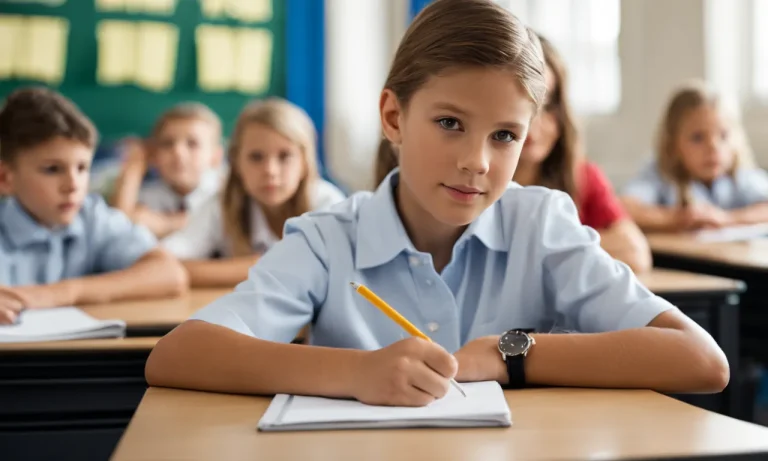Winter is coming, and for many students that means eagerly anticipating snow days off from school. If you’re wondering how many snow days schools typically get, you’re not alone. As a parent or student, knowing if and when snow days might occur helps you plan and prepare.
If you’re short on time, here’s a quick answer: on average, schools in the northeastern United States get around 5 snow days per year. Schools in the midwest average around 8 per year. Some years see more, some see less, depending on the severity of winter weather.
In this detailed article, we’ll explore the factors that go into school snow day decisions, look at snow day trends over the years, and provide averages for different U.S. regions. We’ll also give tips for making the most of unexpected days off.
View this post on Instagram
What Factors Determine Snow Days for Schools?
Snow days are highly anticipated by students and often dreaded by parents, but have you ever wondered what factors determine whether or not schools get a day off due to snow? It’s not as simple as waking up to a winter wonderland.
Schools take several factors into consideration before making the decision to close their doors for a snow day.
Current and Forecasted Weather Conditions
One of the primary factors that determine snow days for schools is the current and forecasted weather conditions. School administrators closely monitor weather reports to assess the severity of the snowstorm.
Factors such as heavy snowfall, freezing rain, or extreme wind chills can all contribute to hazardous conditions that make it unsafe for students and staff to travel to and from school.
Road Conditions and Visibility
Another crucial factor in the decision-making process is the state of the roads and visibility. Even if the snowfall itself may not be significant, icy roads or poor visibility can make it difficult and dangerous for buses and cars to navigate.
Schools consider the safety of their students and staff when assessing road conditions and visibility before deciding to cancel classes for a snow day.
Building Conditions and Parking Lots
Building conditions and the state of parking lots are also important factors to consider. If the school building or parking lots are not adequately cleared of snow and ice, it may be unsafe for students and staff to enter the premises.
Additionally, schools need to ensure that heating systems are functioning properly to provide a safe and comfortable learning environment for everyone.
Availability of Staff
The availability of staff is another crucial consideration. If a significant number of teachers or support staff are unable to make it to school due to hazardous road conditions, it may be challenging to maintain a safe and effective learning environment.
In such cases, schools may opt to close for a snow day to ensure the well-being of both students and staff.
State or District Policies
Lastly, state or district policies play a role in determining snow days. Some states or districts have specific guidelines in place that outline when and how snow days are called. These policies take into account factors such as the number of consecutive snow days, the number of inches of snowfall, or the wind chill temperature.
These policies aim to provide consistency and fairness in the decision-making process.
How Have Snow Days Changed Over Time?
Snow days have undergone significant changes over the years, thanks to various factors that have influenced school policies and practices. Let’s take a closer look at some of these transformative aspects:
View this post on Instagram
Improved weather forecasting
One of the key factors contributing to changes in snow day policies is the advancement in weather forecasting technology. With improved accuracy and precision, meteorologists can now predict severe weather conditions well in advance.
This allows schools to make informed decisions about closing or delaying classes, reducing the number of unnecessary snow days.
According to the National Oceanic and Atmospheric Administration (NOAA), a seven-day forecast can accurately predict the weather about 80% of the time and a five-day forecast can accurately predict the weather approximately 90% of the time. However, a 10-day—or longer—forecast is only right about half the time.
This means that schools can rely on more accurate data to determine whether it is safe for students and staff to travel to school during inclement weather.
Better equipment/resources for snow removal
Another factor that has impacted snow day trends is the availability of better equipment and resources for snow removal. Snowplows, salt spreaders, and other specialized machinery have become more efficient, enabling road crews to clear snow and ice from roads and school premises more quickly than ever before.
Thanks to these advancements, many schools are now better equipped to handle snowfall and maintain safe conditions for students and staff. This means that even in areas with heavy snowfall, the need for snow days has decreased, as schools can more effectively manage winter weather conditions.
Flexible school policies like remote learning
The rise of technology and the advent of remote learning have also had a significant impact on snow day policies. In recent years, many schools have adopted flexible policies that allow for remote learning during inclement weather.
This means that even if physical school buildings are closed due to snow, students can continue their education from the comfort of their homes.
Remote learning has proven to be an effective alternative during snow days, ensuring that students do not miss out on valuable instructional time. It also provides an opportunity for schools to maintain continuity in their academic schedules, even in the face of adverse weather conditions.
Regional differences in snow day trends
It is important to note that snow day trends can vary significantly based on regional differences. The amount of snowfall, geographical location, and local infrastructure play a significant role in determining how many snow days schools in a particular area may get.
For example, schools in regions that experience heavy snowfall on a regular basis may have well-established protocols and resources in place to handle winter weather. On the other hand, schools in areas that rarely see snow may be less prepared to deal with its impact, resulting in more frequent closures.
Furthermore, cultural and societal factors can also influence snow day policies. Some regions may place a higher emphasis on safety and prioritize caution, leading to more frequent closures. In contrast, other areas may have a higher tolerance for winter weather and may be more reluctant to cancel classes.
Snow Day Averages by U.S. Region
Northeast: 4-6 per year
The Northeast region of the United States is known for its harsh winter weather and heavy snowfall. As a result, schools in this region typically experience an average of 4-6 snow days per year. This means that students in the Northeast can expect to have a handful of days off from school due to inclement weather.
Snowstorms and blizzards are common during the winter months, and school administrators prioritize the safety of students and staff when deciding whether to close schools for the day.
Midwest: 6-10 per year
The Midwest region of the United States also experiences significant snowfall during the winter months. Schools in this region typically have an average of 6-10 snow days per year. The severity of winter weather can vary from year to year, and some winters may be milder while others can be more severe.
School districts in the Midwest closely monitor weather forecasts and work closely with local authorities to make informed decisions about school closures. Safety is always the top priority when determining whether to cancel classes due to snow and ice.
South: 0-2 per year
The South region of the United States generally has a milder climate compared to the Northeast and Midwest. As a result, schools in the South typically have fewer snow days, averaging between 0-2 per year.
While snowfall is less common in this region, it is not unheard of for schools to close due to winter weather. Even a small amount of snow or ice can create hazardous conditions on roads and sidewalks, making it unsafe for students and staff to travel to school.
School districts in the South have contingency plans in place to ensure the safety of everyone involved.
West/Northwest: 1-3 per year
The West and Northwest regions of the United States are known for their diverse climates, ranging from coastal areas to mountainous regions. Schools in this area typically experience an average of 1-3 snow days per year.
The frequency and severity of winter weather can vary depending on the specific location within the region. In higher elevation areas, such as the Rocky Mountains, snowfall is more common and can lead to more frequent school closures.
School districts in the West and Northwest work closely with local authorities to assess the safety of travel conditions during winter weather events.
Tips for Making the Most of Snow Days
When schools announce snow days, it can be a mix of excitement and stress for parents. On one hand, it’s a day off from the usual routine, but on the other hand, it can disrupt work schedules and leave parents scrambling for childcare. Here are some tips for making the most of snow days:
View this post on Instagram
Have a backup childcare plan
It’s always a good idea to have a backup childcare plan in place for unexpected snow days. Whether it’s a trusted neighbor, a family member, or a babysitter, having someone you can rely on to watch your children can give you peace of mind.
Make sure to communicate with them beforehand and have their contact information readily available.
Plan indoor activities and games
Being stuck indoors doesn’t have to be boring. Plan fun indoor activities and games to keep your children entertained. Set up a scavenger hunt, have a movie marathon, or get creative with arts and crafts projects.
This will not only keep them engaged but also provide an opportunity for quality family time.
Do informal learning activities
Snow days can also be a chance for informal learning. Take advantage of the extra time by engaging your children in educational activities. This could include reading together, doing puzzles, or even exploring educational websites or apps.
Catch up on chores/errands
While snow days are often associated with relaxation, they can also be a great opportunity to catch up on household chores and errands. Use this time to tackle those tasks that have been piling up, such as organizing closets or running errands that you’ve been putting off.
This way, you can make the most of your time at home and feel accomplished by the end of the day.
Enjoy family time and relaxation
Lastly, don’t forget to take some time to relax and enjoy quality family time. Play board games together, have a cozy movie night, or simply snuggle up with a good book. Snow days can be a great opportunity to slow down and appreciate the simple pleasures of life.
By planning ahead and making the most of snow days, you can turn what could be a stressful situation into a memorable and enjoyable day for the whole family.
Conclusion
Snow days can be both exciting and challenging for families. While it’s hard to predict exactly how many your school or district will see in a given winter, being prepared helps you make the most of these unexpected days off.
Paying attention to local weather forecasts can give you an indication when one might be coming. Make sure you have childcare options lined up if needed, and have some ideas ready for indoor fun and learning.
With a little planning, snow days can become cherished family memories rather than crises to be managed.






